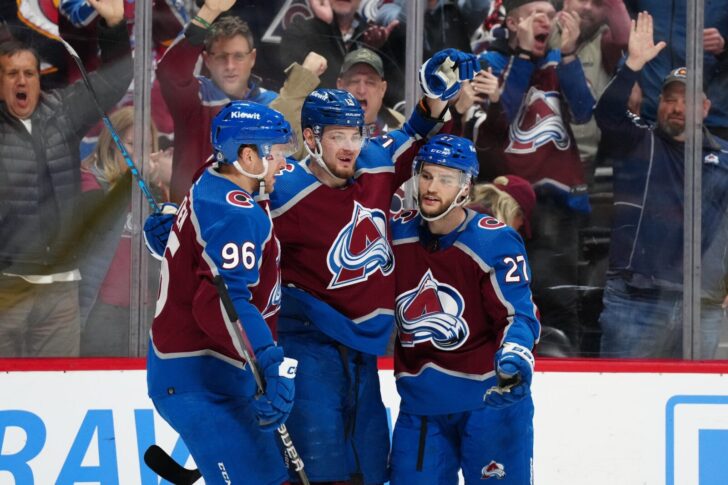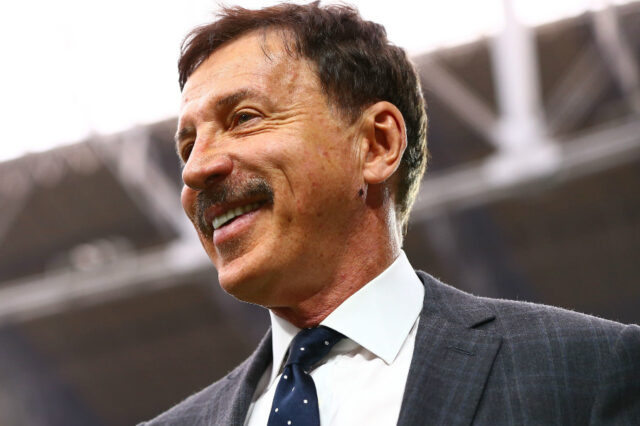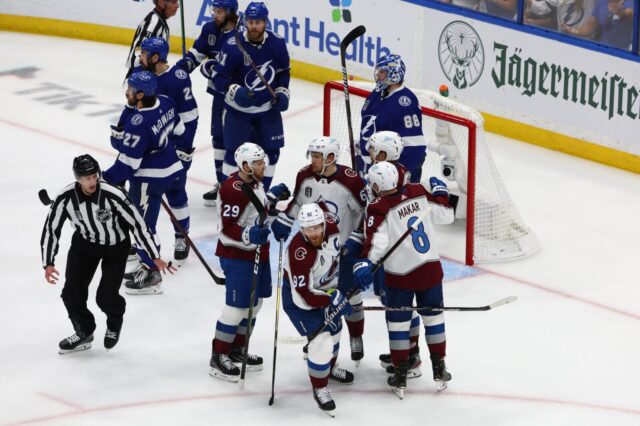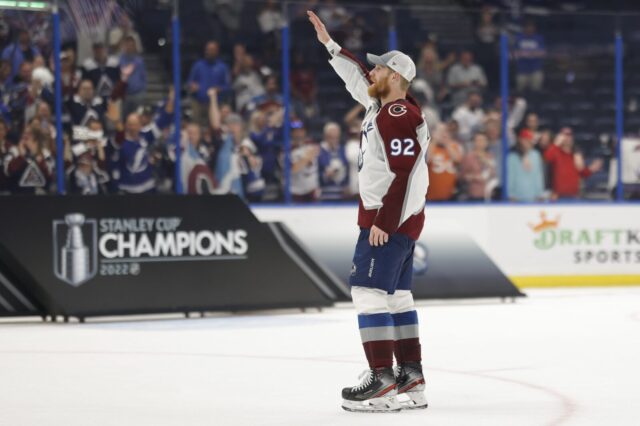Several things were made clear last Thursday when general manager Chris MacFarland and Avalanche captain Gabriel Landeskog spent more than 45 minutes speaking with the media at the team’s practice facility.
For starters, Landeskog, who has not played in nearly two years, is still working his way back and expects to play games in 2024-25. Also, Valeri Nichushkin — who is serving a six-month suspension handed down by the NHL and NHLPA — isn’t going to get his contract terminated. At least not at this time. And Jonathan Drouin, the longtime friend of Nathan MacKinnon who had a career year after signing a one-year prove-it deal will be tough to fit under the cap. The team wants him to return, he’d like to stay, but it’ll take some sacrifices on both sides to make it happen.
MacFarland had cap space and several key positions to fill last summer in what was a retooling summer of change for the Avs. They were able to hand out a reasonable amount of money to guys like Miles Wood and Ross Colton, along with acquiring Ryan Johansen at $4 million against the cap. This year won’t be the same. After signing restricted free agent Casey Mittelstadt to what is expected to be a hefty contract, the team won’t have enough cap space to make many other sizeable moves. Not unless they move cap space out.
“As we stand today, what I do know is we will need plenty of what we call lower AAV-types to fill out the roster with the information we have today, and as things stand with Gabe’s situation, with Val’s situation at this time,” MacFarland said last week. “But just like every other offseason, the next few weeks, there’s going to be something that may fall into our lap that we were not even thinking of or weren’t even expecting. So it should be fun, but it’s an important information-gathering time for us to do our due diligence internally and with the coaches and with our scouts, and then to see what opportunities may or may not be there with other teams.”
But what exactly will that all look like? How will the team navigate a potential contract for Drouin and Nichushkin’s suspension? My thoughts on two of the Avs’ key summer decisions:
Jonathan Drouin
Drouin has to be back. There’s no way the team or player would let this end abruptly after one season, right? I know the Avs are tight against the cap, but players like Drouin in the prime of their careers don’t grow on trees. Because of his relationship with MacKinnon and the issues he dealt with in Montreal, the Avalanche are in a unique situation where they could quite possibly sign one of the bigger steal contracts in the league. It just needs to be a reasonable amount for Drouin’s camp for it to make sense. I don’t think a shortsighted cap issue will lead to Drouin leaving. The team will find a way to make it work and do whatever type of cap shenanigans are needed. It would be quite upsetting if Drouin signed elsewhere in July.
Perhaps a five-year deal carrying an AAV of around $3.5 million? The Avs would need to really maneuver the cap to make something like that work, especially when Nichushkin’s contract is ready to be added back to the active roster. Maybe the Avs could also bring the AAV down by offering eight years and doing what the Tampa Bay Lightning did with Nick Paul in 2022.
Either way, both sides are motivated to make this work. There’s got to be a middle ground for everyone.
Valeri Nichushkin
Oh, Val. What is the team supposed to do with you? A week before Nichushkin’s suspension, I was invited to join Nick Kypreos and Justin Bourne on Sportsnet’s The Real Kyper and Bourne Show. The hosts raved about Nichushkin’s game and his importance to the team and of course, I joined in. I went as far as saying that Nichushkin should be considered among the core four in Denver. It’s no longer just Cale Makar, Mikko Rantanen and MacKinnon who drive the bus for Jared Bednar’s team. Nichushkin, who is locked up for another six seasons, is part of that core, and a key piece of this team’s success. Fast forward a week, he’s back in the Player Assistance Program and won’t be seen for half a year.
The team explored all options and seemingly tried to terminate his contract. We can at least formulate this conclusion by reading between the lines of what MacFarland said last week. But I struggle to really gauge where the team goes from here. On one hand, three instances in 13 months are far too many for any team to handle — even more so for a team with the high standard the Avs have set. On the other hand, if you have no choice but to wait it out until he’s cleared to return, then what can you do? There’s a scenario where Nichushkin does everything he needs to do to get cleared and is welcomed back to the team. In that scenario, the Avalanche could either sit him down and ensure he’s bought in and continue to benefit from his strong play, or they could trade him for pennies on the dollar to another team. Which likely will include salary retention, and giving up a key player in his prime. It’s not going to be easy to handle Val’s return. But the team might have no choice but to find a way to make it work. They certainly have the guys in the room that you could trust to do this.
With Nichushkin in the lineup over the past three seasons, the Avalanche are 118-35-16. This is the equivalent of a 122-point season over 82 games. Without him in the lineup, they are 39-33-5, which equates to an 88-point season. He’s that important.
It’s not just about trying to navigate his contract and making sure the team doesn’t suffer because of it. It’s about losing what he brings to the team, which is nearly impossible to replace. The best-case scenario for everyone is to find a way to make this work and get Nichushkin clean and focused on hockey.
How exactly do we get there? That’s a question for the leaders in the organization.



